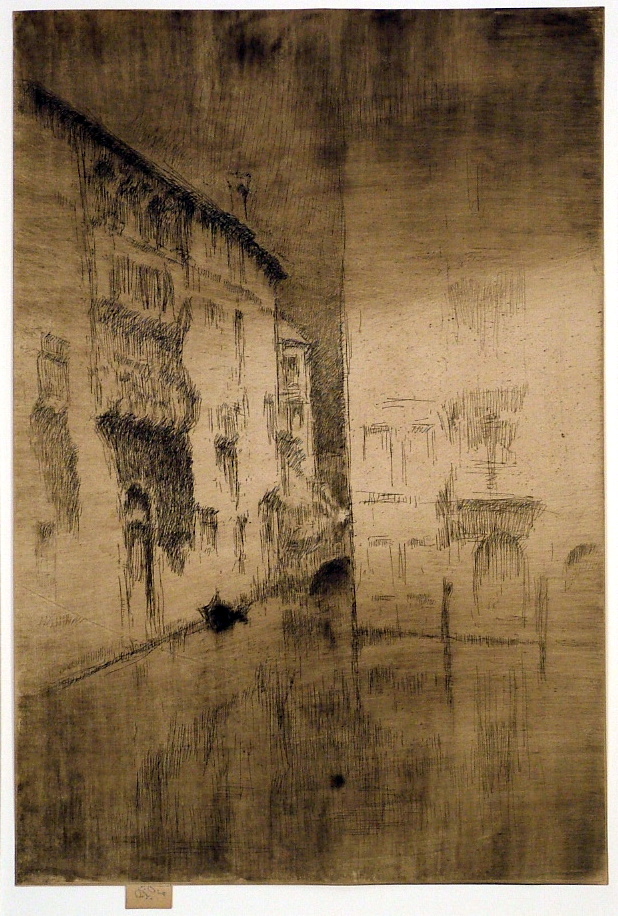Nocturne: Palaces
James Whistler (1834-1903), Nocturne: Palaces, etching and drypoint with plate tone, 1879-80, signed with the butterfly on the tab and inscribed “imp.” Reference: Glasgow 200, Kennedy 202, seventh state (of 9). From the Twenty-Six Etchings or the Second Venice Set. In very good condition, on laid paper (trimmed by the artist to the platemark except for the tab), 11 3/4 x 7 7/8 inches.
A very fine atmospheric impression, printed in brown ink, carefully wiped to darken the water in the canal in the foreground and the sky toward the top.
In this state a row of fine lines above the roof at the left and along the border of the house and canal at the left have been burnished, thus enhancing the contrast between the roof and sky, and house and canal; the butterfly has yet to be added to the plate.
Each impression of Nocturne: Palaces is different from the others, in effect a monotype, expressing different times of night or day, temperatures, effects of light. The lamp lighting the composition from within (a device borrowed from Rembrandt and also used in his Street at Saverne of 1858) is in this impression barely visible; in other impressions it is very bright. This impression is in some ways comparable to an impression (also of the seventh state) at the Art Gallery of Ontario used as both the front and back cover illustrations for Katherine A. Lochnan’s book The Etchings of James McNeill Whistler, although of course there are still substantial differences in the wiping of the plate tone. Indeed, differences in states for this print are slight, while differences in the wiping of the plate from one impression to another are vast.
Margaret MacDonald in her classic Palaces in the Night: Whistler in Venice amplifies: “Nocturne: Palaces was a daring plate: difficult to print, relying heavily on the quality of the ephemeral drypoint lines…in the best impressions it is the inking of the plate that coordinates and unifies the widely dispersed lines of shading. The linear pattern of marks is unusual and the inking makes each print unique.”
POR
